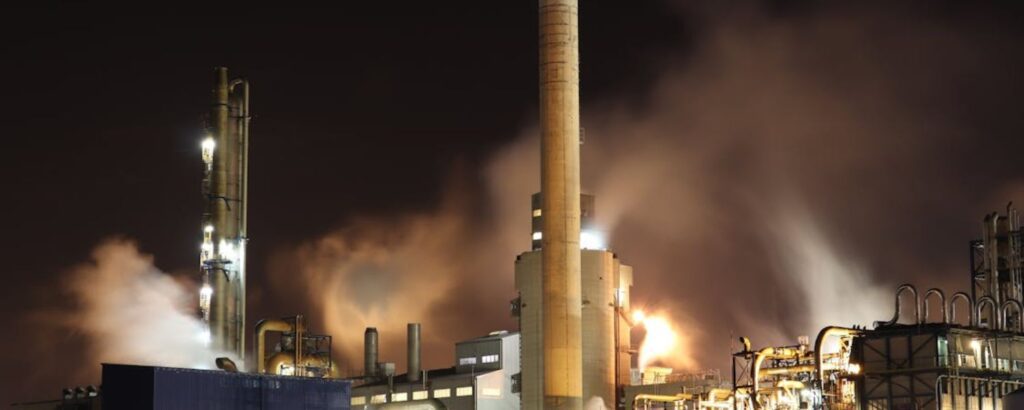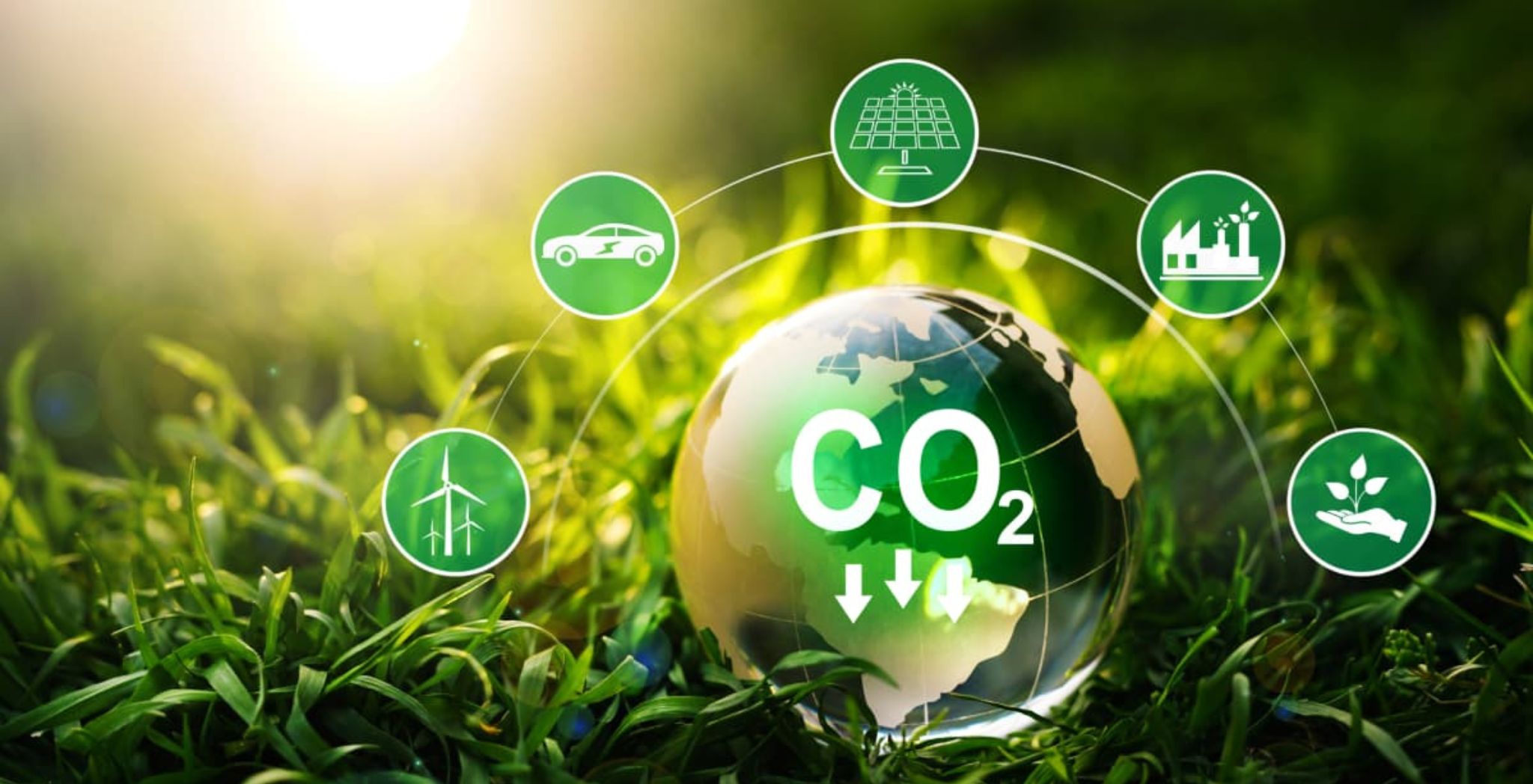One major danger to our world is climate change, necessitating immediate and sustained action. Carbon reduction, the process of lowering carbon dioxide (CO2) emissions, is essential for mitigating this threat. However, you are an individual seeking to reduce your carbon footprint, a business aiming to improve sustainability, or a policymaker crafting impactful regulations, understanding effective carbon reduction strategies is crucial.
Understanding Carbon Emissions

Understanding carbon emissions sources is essential to reduce them effectively. Carbon dioxide is a greenhouse gas (GHG) primarily released through burning fossil fuels for energy, deforestation, and industrial processes. These emissions trap atmospheric heat, leading to global warming and climate change. Major sectors contributing to carbon emission monitoring solutions include transportation, electricity generation, industry, agriculture, and waste management.
The Importance of Carbon Reduction
Reducing carbon emissions is vital for several reasons. It helps slow the pace of global warming, thereby mitigating climate change impacts such as rising sea levels, severe weather patterns, and loss of biodiversity. Carbon reductions promotes public health by decreasing air pollution, which is linked to respiratory diseases and other health issues. Moreover, it drives economic benefits through the development of green technologies and the creation of sustainable jobs.
Strategies for Effective Carbon Reduction

Renewable Energy Adoption
One of the most impactful ways to lower the carbon emissions is by transitioning to renewable energy sources like solar, wind, hydro, and geothermal. These sources produce electricity without burning fossil fuels, significantly lowering CO2 emissions. However, governments and businesses are increasingly investing in renewable energy projects to cut emissions, ensure energy security, and create economic opportunities.
Energy Efficiency Improvements
However, improving energy efficiency in buildings, transportation, and industrial processes is another critical strategy for carbon reduction. Further, this can be achieved through better insulation, energy-efficient appliances, LED lighting, and advanced manufacturing techniques. Energy efficiency reduces the overall energy demand, lowering the amount of carbon emissions generated.
Carbon Capture and Storage (CCS)
So, carbon capture and storage technology is a promising approach to mitigate carbon emissions from industrial sources. CCS involves capturing CO2 emissions from power plants and further, industrial processes before they enter the atmosphere, transporting the captured CO2, and storing it underground in geological formations. This technology can significantly reduce emissions from some of the largest sources of CO2.
Sustainable Transportation
However, the transportation sector is a significant contributor to carbon emissions. Promoting sustainable solutions and transportation options such as electric vehicles (EVs), public transit, biking, and walking can substantially reduce emissions. Governments can support this transition through policies and incentives that encourage the adoption of EVs and the development of public transportation infrastructure.
Reforestation and Afforestation
Further, forests play a crucial role in absorbing CO2 from the atmosphere. Moreover, reforestation (replanting trees in deforested areas) and afforestation (planting trees in unforested regions) are effective carbon reduction strategies. These initiatives sequester carbon, enhance biodiversity, protect watersheds, and provide other environmental benefits.
Sustainable Agriculture Practices
Additionally, agriculture is both a source and a sink for carbon emissions. Implementing sustainable practices such as no-till farming, crop rotation, and agroforestry can reduce emissions from agricultural activities and increase carbon sequestration in soils. Additionally, reducing food waste and adopting plant-based diets can further decrease the food system’s carbon footprint.
Waste Reduction and Recycling
Reducing waste generation and promoting recycling can significantly cut carbon emissions associated with waste management. Moreover, landfills produce methane, a potent greenhouse gas, while recycling minimizes the need for energy-intensive production of new materials. Composting organic waste also reduces methane emissions and improves soil health.
Supporting Carbon Reduction Companies
Businesses can achieve significant carbon reductions by partnering with carbon reduction companies. These companies specialize in identifying and implementing strategies to lower emissions, often through energy efficiency audits, renewable energy installations, and sustainable technology solutions supply chain management. Utilizing their expertise can help businesses achieve their sustainability goals more effectively.
Implementing Carbon Reduction Policies
Governments are crucial in driving large-scale carbon reduction through policies and regulations. Effective carbon reduction policy measures include carbon pricing (carbon taxes or cap-and-trade systems), renewable energy mandates, and efficiency standards for buildings and vehicles. These policies create incentives for reducing emissions and encourage the development of clean technologies.
Engaging in Carbon Reduction Projects
Individuals and organizations can participate in various carbon reduction projects that contribute to overall emission reductions. These projects include community renewable energy initiatives, tree-planting campaigns, and energy conservation programs. By supporting or directly engaging in such projects, stakeholders can actively contribute to carbon reduction efforts.
Leveraging Carbon Reduction Consulting Services
Carbon reduction consulting services provide expert guidance on lowering emissions. These consultants assess emission levels, identify reduction opportunities, and develop customized strategies for businesses and organizations. Leveraging their expertise ensures that carbon reduction efforts are efficient, cost-effective, and aligned with sustainability goals.
Technological Innovations in Carbon Reduction

Advanced Energy Storage Systems
Developing advanced energy storage systems is crucial for integrating renewable energy sources into the grid. These systems, such as lithium-ion batteries and pumped hydro storage, store excess renewable energy for use when production is low. Enhanced energy storage capabilities improve grid stability and reduce reliance on fossil fuels.
Smart Grids and Energy Management
Innovative grid technology enables more efficient management of electricity supply and demand. Using digital communications technology, smart grids can optimize energy distribution, reduce losses, and integrate renewable energy sources more effectively. This leads to lower carbon emissions and enhanced grid reliability.
Carbon Reduction Technology in Industry
Industries are increasingly adopting innovative carbon reduction technologies to lower emissions. Examples include carbon-neutral cement production, low-carbon steel manufacturing, and bioplastics. Furthermore, these technologies not only reduce emissions but also promote the development of sustainable products and processes.
The Role of Artificial Intelligence
Artificial intelligence (AI) is increasingly essential in carbon reduction efforts. AI can optimize energy use in buildings, predict and manage energy demand, and enhance the efficiency of industrial processes. Businesses and governments can implement more effective and data-driven carbon reduction strategies by leveraging AI.
Carbon Removal Technologies
Beyond reducing emissions, carbon removal technologies aim to remove CO2 from the atmosphere actively. These include direct air capture, bioenergy with carbon capture and storage (BECCS), and enhanced weathering. While still in the early stages of development, these technologies have the potential to contribute to global carbon reduction efforts significantly.
The Impact of Individual Actions

Reducing Personal Carbon Footprint
Moreover, individuals can take several steps to reduce their carbon footprint. So, simple actions such as using energy-efficient appliances, reducing car travel, and minimizing waste can significantly impact carbon reduction. Additionally, supporting renewable energy by choosing green energy providers and participating in local sustainability initiatives can further contribute to carbon’s reduction.
Sustainable Lifestyle Choices
Adopting a sustainable lifestyle involves making conscious choices that reduce carbon emissions. This includes opting for public transportation or cycling, consuming locally produced and plant-based foods, and reducing water usage. By making these choices, individuals can lead by example and encourage others to adopt similar practices.
Supporting Carbon Reduction Initiatives
Individuals can also support broader carbon reductions initiatives through advocacy, volunteering, and financial contributions. By advocating for more robust environmental policies, participating in community projects, and donating to environmental organizations, individuals can help drive systemic changes that lower emissions on a larger scale.
Conclusion
Carbon reduction is essential to addressing the climate crisis and ensuring a sustainable future. At VectorGlobe, we believe that combining renewable energy adoption, energy efficiency improvements, technological innovations, and supportive policies can significantly reduce carbon emissions. Both individual actions and collective efforts are crucial in this endeavor. Through continuous commitment and collaboration, VectorGlobe is dedicated to achieving meaningful progress in carbon reductions and protecting our planet for future generations.

